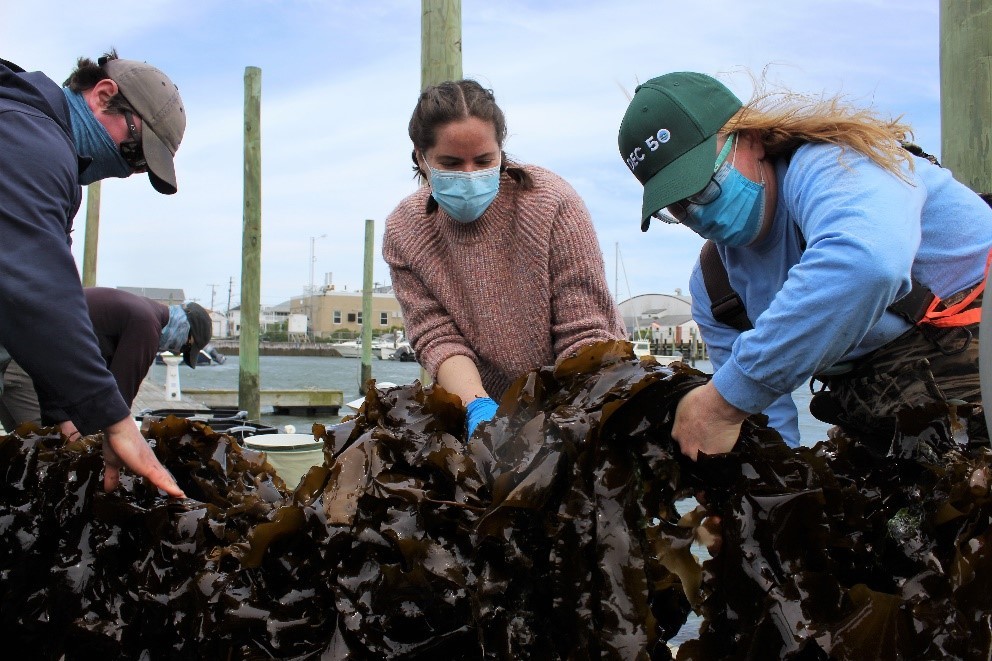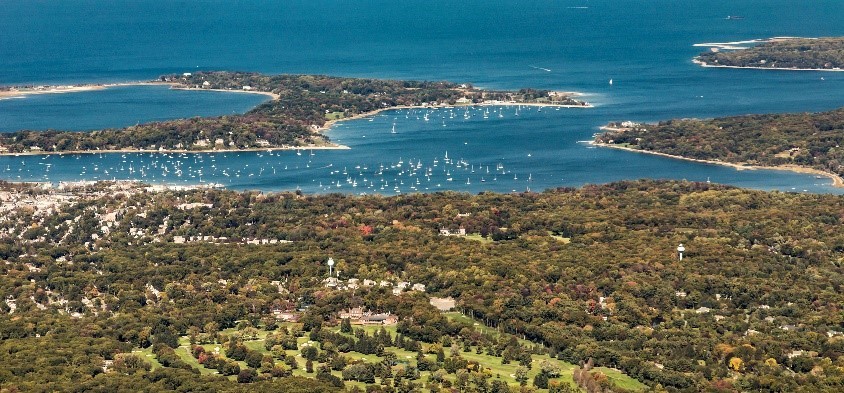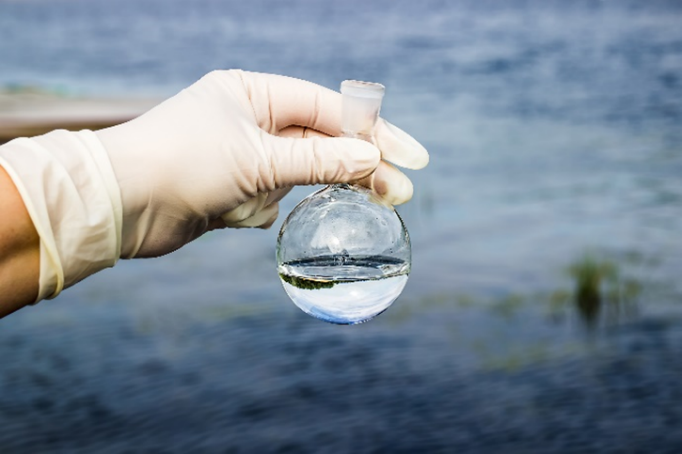Long Island Nitrogen Action Plan (LINAP) - September Newsletter
The New York State Department of Environmental Conservation sent this bulletin on 09/22/2020 03:15 PM EDT |
| DEC Delivers - Information to keep you connected and informed from the NYS Department of Environmental Conservation |
| Share or view as a web page || Update preferences or unsubscribe |
Long Island Nitrogen Action Plan (LINAP) - September Newsletter
|
Long Island Sound Study Celebrates 35th Anniversary
This year marks the 35th anniversary of the Long Island Sound Study (LISS), a bi-state partnership (Connecticut and New York) consisting of federal and state agencies, universities, industry, community groups, and individuals dedicated to restoring and protecting the Sound. Over the past 35 years, the LISS has continued to work to bring Long Island Sound back to health. In 1994, the LISS developed a Comprehensive Conservation and Management Plan (CCMP). This plan was updated in 2015 with ambitious targets to drive further progress through 2035. LISS’s partners have made significant progress in implementing the plan, giving priority to reducing nitrogen loads, habitat restoration, public involvement and education, and water quality monitoring. In 2001 the EPA approved New York and Connecticut’s plan, entitled The Total Maximum Daily Load Analysis (TMDL) to Achieve Water Quality Standards for Dissolved Oxygen, to achieve a 58.5 percent reduction in nitrogen to combat hypoxic conditions (low dissolved oxygen) in the Sound. By 2016, NY and CT had attained this goal. By 2018, upgrades to wastewater treatment plants (WWTP) had resulted in an annual reduction of more than 50 million pounds of nitrogen to the Sound from peak years in the early 1990s and the maximum area of hypoxic waters measured in the Sound in 2019 was just 89 square miles. This remains among the lowest eight measurements of hypoxia recorded in the Sound in 33 years! In 2015, the EPA embarked on a new Long Island Sound Nitrogen Reduction Strategy with a primary focus on achieving clean water in harbors, bays, coves, and other embayments through efforts to remove nutrient pollution from urban stormwater and turf fertilizer, and from coastal on-site wastewater treatment systems such as septic tanks. LISS Budget Highest in HistoryCongress approved $21.6 million for the Long Island Sound Study for the 2020 federal fiscal year, a $7 million increase from the 2019 funding level! The increase in funding to LISS began in Federal Fiscal Year 2017 with an increase in the annual budget from about $4.6 million to $8.6 million. The 2018 budget increased to $12.6 million and to $14.6 million in 2019. The increased federal support has allowed many water quality programs and projects to move forward. Each spring the LISS Management Committee recommends projects to fund for the upcoming year based on the program’s federally authorized budget. The projects are intended to help achieve the CCMP goals. The full list of projects are included in the Long Island Sound Study EPA 2020 Work Plan. 2020 Long Island Sound Futures FundThe Long Island Sound Study initiated the Long Island Sound Futures Fund in 2005 through the EPA’s Long Island Sound Office and the National Fish and Wildlife Foundation. The Long Island Sound Futures Fund supports projects in local communities that aim to protect and restore the Long Island Sound. In 2020 the LISS Futures Fund has a budget of $3 million - its largest amount ever! To date, the Fund has invested $22 million in 451 projects. The program has generated an additional $39 million in grantee match, for a total impact of $62 million for regional and local projects. The projects have reconnected 176 miles of river for fish passage, restored 1,114 acres of critical fish and wildlife habitat and open space, treated 212 million gallons of stormwater pollution, and educated and engaged 4.9 million people in protection and restoration of the Sound. Awards for the 2020 grants are expected to be announced in the November 2020. Visit the National Fish and Wildlife Foundation’s Sound Futures Fund Grant web page to find out what projects are eligible, and details on how to apply. For a list of grants awarded click here. National Coastal and Estuarine Summit September 29 - October 1Long Island Sound topics will be featured in this year’s National Coastal and Estuarine Summit. The event, organized by Restore America’s Estuaries, is the largest international gathering of coastal professionals. The Summit will be held virtually and will include several Long Island Sound-specific topics including a session moderated by Dr. Jim Ammerman, the Long Island Sound Science Coordinator, on monitoring nitrogen levels in Long Island Sound, and its embayments and tributaries; a session moderated by Katie O’Brien Clayton, an environmental analyst at the Connecticut Department of Energy and Environmental Protection, on emerging trends concerning hypoxia (depleted oxygen levels) in Long Island Sound; and Vicky O’Neill, the Long Island Sound Study’s New York Habitat Restoration and Stewardship Coordinator, on innovative methods to restore tidal wetlands. More information on these and other Summit topics, and information on how to register can be found here. Nutrient Bioextraction Pilot ProjectThe coronavirus outbreak has not stopped the implementation of three nutrient bioextraction projects, which got underway this winter. In December, sugar kelp, a seaweed that favors cold water conditions, were seeded on lines and then anchored under the water at sites in Oyster Bay, Hempstead Bay, and Great South Bay in Long Island, and Greenwich Harbor in Connecticut. The kelp was harvested at all of the sites in April and May and is being analyzed to determine how much nutrients and carbon were extracted from the Sound as a result of the harvesting. Kelp feeds on nutrients such as nitrogen. By growing and harvesting kelp, bioextraction projects can remove nutrients that could otherwise trigger summer algal blooms, which could lead to poor water quality. The kelp in these projects is also being studied for potential commercial uses such as fertilizer for local farms. Learn more about the projects here.
New Sustainable and Resilient Communities Work GroupSustainable and Resilient Communities is a theme in the CCMP. Recently members of the Management Committee noticed that the “human dimension” seemed to be less developed than a biological-physical-chemical. Also, there was less progress achieved on resilience related objectives and implementation actions. The Management Committee decided to establish a working group to help focus on this important theme. The work group's first meeting was held this month. The work group will create a 5-year plan to guide investments to support local government efforts to be resilient and sustainable. System Wide Eutrophication Model UpdateThe New York City Department of Environmental Protection (NYCDEP) recently entered into a contract with HDR to update the System Wide Eutrophication Model (SWEM) that was previously developed and used for the 2000 Dissolved Oxygen TMDL. This effort will allow researchers to understand how the Sound will be impacted by a changing environment due to both humans and nature. The model will allow for better management decisions to be made to meet the goals of the CCMP. Once complete, the LISS will make the model available for use by stakeholders. The model is expected to be complete by 2025.
Solute Transport Model for Long IslandThe Long Island Sound Study approved funds in the 2020 budget to develop a time-varying solute-transport model for Long Island. This model will aid in providing a more realistic depiction of nitrogen loading through time and allow for the legacy nitrogen in the aquifers to be accounted for. The United States Geological Survey (USGS) will develop the model, which will include historical nitrogen loadings to the aquifer and account for historical pumping and recharge in a three-dimensional model. The additional benefit will be the ability to assess potential management actions on the embayments of the north shore of Long Island, to determine how they can benefit the water quality. The effort builds on the solute transport model that USGS built for the eastern portion of Long Island and when done, the model will cover all of Long Island, including Queens and Brooklyn. The model, which will be publicly available, is expected to take a few years to complete.
Photo Credit: Dave Berg Water Quality Monitoring ProgramsThe Long Island Sound Study participates in many water quality monitoring programs, as highlighted below. The variety of programs provide valuable data for a very complex system. Long Island Sound Water Quality Monitoring Program Real-Time Monitoring on Long Island Sound Buoys The Unified Water Study United States Geological Survey (USGS)
To sign up for the LINAP Newsletter, visit the LINAP webpage or click here. |


 Photo Credit: Aphrodite Montalvo, NYS Department of Environmental Conservation
Photo Credit: Aphrodite Montalvo, NYS Department of Environmental Conservation Photo Credit: Long Island Regional Planning Council
Photo Credit: Long Island Regional Planning Council
 Photo Credit: Long Island Regional Planning Council
Photo Credit: Long Island Regional Planning Council